
Coughton Court's collections
Explore the objects and works of art we care for at Coughton Court on the National Trust Collections website.
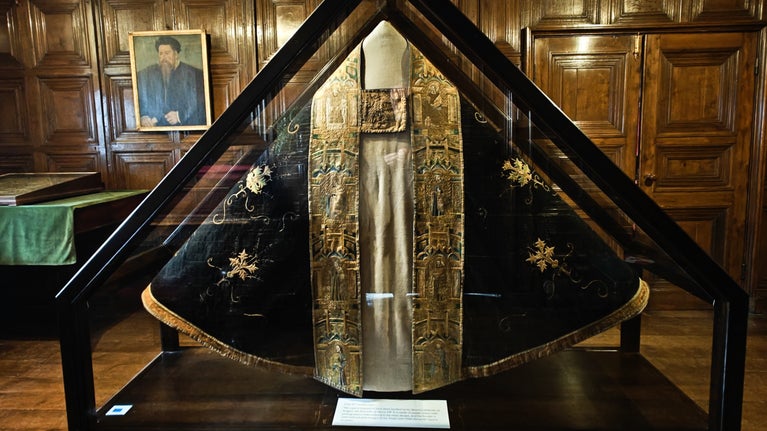
Coughton Court is home to over 2000 historic items, many of which can be seen on a visit. Take a closer look at two of the most important items in the collection – the Throckmorton coat and the Tabula Eliensis.
In 1811, Sir John Throckmorton, 5th Baronet of Coughton Court, entered a bet to prove that a coat could be made in just one day – from sunrise when the wool was on the backs of two sheep, to sunset when the brown tailored coat rested on his shoulders.
He laid down a 1,000-guinea bet – equating to around £64,000 today. Luckily, Sir John won and wore it to dinner that night. You can see the very coat on display in the Saloon along with a portrait of him wearing it. These pieces of history are presented alongside family chattels, books and photographs.

To celebrate the 600-year anniversary of the Throckmorton family at Coughton, a twenty-first-century version of the coat was created and presented to Mrs McLaren-Throckmorton’s grandson, Magnus Birch.
Created by Herefordshire-based textile artists Rebecca Griffiths and Victoria Geary, who run the company 'Pretty Rubbish', the coat was made from a variety of fabrics and recycled material, taking inspiration from the intricate family history and visual information gathered from Coughton Court.
Every design on the new coat comes from an idea, design or image found in the house including lace detail found in family portraits, patterns found on books and wallpaper as well as designs from the dole gate and the family crest.
They used the traditional tailcoat idea and incorporated ideas like 'hidden pockets' and encased buttons. These details reflect the Thockmorton family’s commitment to Catholicism as demonstrated in the house by the numerous priest holes.

The tabula is currently away for restorative work. It is so large that it had to be taken out through the roof during the re-roofing project. It will be displayed elsewhere in the property on its return.
A legacy of heightened tensions between England and Spain, the Tabula Eliensis records the experience of the Catholic gentry between 1588 and 1594.
This painted cloth presents nearly 1,000 years of the history of Ely in Cambridgeshire through painting, heraldry and text.
In 1588, Philip II of Spain assembled the largest fleet ever seen in Europe and set sail towards England. Spanish – and Catholic – conquest felt certain. Known today as the defeated Spanish Armada, this was the first of several invasion attempts.
During these turbulent years, Queen Elizabeth I and her advisors questioned the loyalty of the Catholic gentry. Between 1588 and 1596, at times of high alert, they repeatedly ordered that influential Catholics should be interned.
These gentlemen were held at Ely, Broughton and Banbury. Their heraldic crests are recorded on the painted cloth.
Ely Cathedral is shown at the top in the centre of the painted cloth. The text to either side discusses the importance of charitable foundations and the former role of monasteries in society.
This is surrounded by an early history of the monastery at Ely, followed by a sequence of the 40 Knights whom William the Conqueror stationed at Ely.
The middle section contains a series of portrait roundels of monarchs to Elizabeth I, with their abbots, priors, deans and bishops of Ely.
Beneath these are the arms of the Catholic internees, including Thomas Throckmorton of Coughton Court.
The painted cloth was made in England in 1596. It is not known who made or commissioned it, or how it came to Coughton Court.
It measures 2.8m x 2.2m and is formed from two pieces of canvas, painted in oil. It was probably used to decorate and help insulate a room.
By recording the experiences of the Catholic gentry, the cloth also delivered several symbolic messages.

Explore the objects and works of art we care for at Coughton Court on the National Trust Collections website.
Explore the house and collections at Coughton Court, which has been home to the Throckmorton family for over six centuries and continues to be their home today.
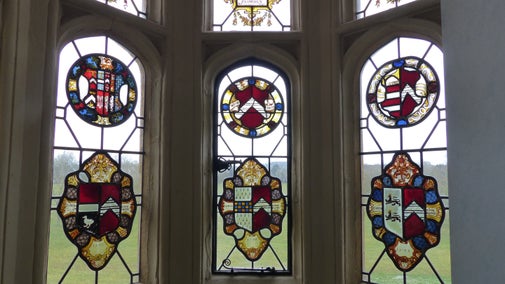
The Throckmorton family created and manages the award-winning garden at Coughton. Highlights include the walled garden, lake, knot garden, vegetable garden, orchard and bog garden.

Twenty-one generations of the Throckmorton family have lived at Coughton since 1409. Over six centuries there are many stories to tell, including that of the gunpowder plot.
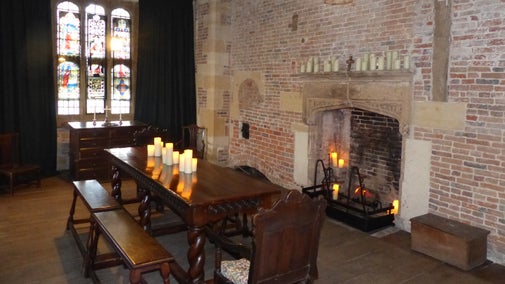
Caring for Coughton goes on all year round, much of it behind the scenes. Find out more about the work being done to protect and restore Coughton and its treasures.

Visit Coughton Court for family-friendly events and activities in the house and garden, including woodland walks and wildlife spotting.
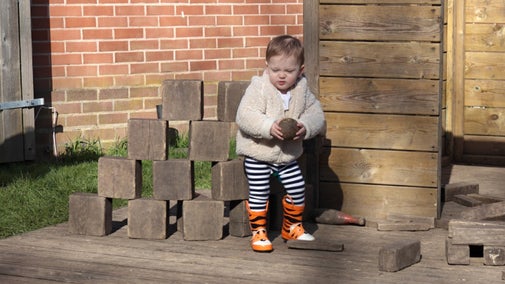
The art and heritage collections we care for rival the world’s greatest museums. Learn more about the collection of paintings, decorative art, costume, books, household and other objects at historic places.
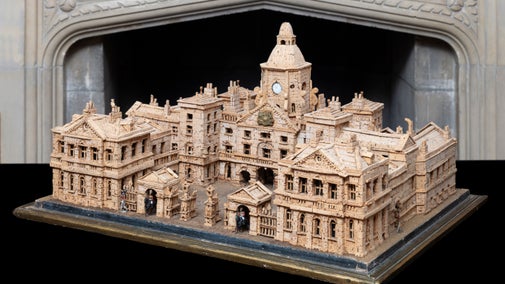
See the breadth of our collection of works of art, furniture and more: we care for around a million objects at over 200 historic places, there’s a surprise discovery around every corner.

Discover the stories behind some of the greatest artworks and artefacts looked after by the National Trust, as told in a dedicated book, 125 Treasures from the Collections of the National Trust.
